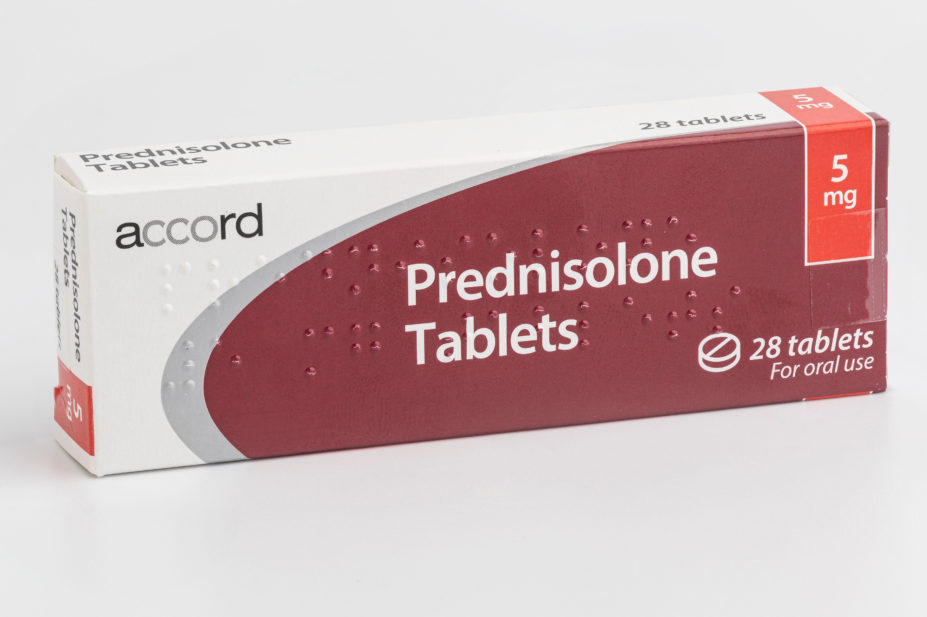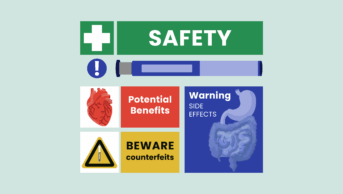
David Hare / Alamy Stock Photo
A new way for clinicians in England to identify potential over-prescribing of prednisolone has been developed by the NHS Business Services Authority (NHSBSA) in an effort to reduce the associated risk of adverse side effects.
In a statement published on 2 December 2021, the NHSBSA said it had worked with Guy’s and St Thomas’ NHS Foundation Trust and the Oxford Academic Health Science Network to create a dashboard that lists patients in England who have been prescribed both prednisolone and another asthma or COPD medicine during the past 12 months.
Prednisolone is an oral corticosteroid used to treat disorders including allergies, skin conditions and infectious diseases, as well as in the prevention of post-transplant organ rejection.
Short courses of the drug can be prescribed to relieve acute symptoms of asthma. However, high doses or frequent prescriptions of short-course corticosteroids are associated with side effects, including diabetes and osteoporosis.
In England, the drug was prescribed to more than one million people in 2020, with 35,500 of those prescribed doses of more than 3g throughout the year, which is considered a high dose.
According to the statement, the dashboard calculates the total cumulative dose of prednisolone prescribed to these patients so that those who are at risk can be considered for suitable alternative treatment methods.
A spokesperson for NHSBSA explained that the dashboard “groups [patients] by age and the amount of prednisolone prescribed to create patient counts for each [GP] practice”.
“This allows clinicians to stratify their patients by risk and plan patient reviews based upon that information,” they said, adding that “for patient confidentiality reasons, individual patients are not flagged for review automatically in the dashboard”.
Instead, clinicians will need to contact NHSBSA directly to “request the NHS numbers for those included in the dashboard and will need to check the patient record manually in order to carry out the review”.
Anna Murphy, consultant respiratory pharmacist at University Hospitals of Leicester NHS Trust, told The Pharmaceutical Journal that the metric was welcome, saying that “there’s a call for people to become steroid stewards, along the same lines as antimicrobial stewardship, because we know the risks of steroids”.
“We know the benefits of prednisolone and other steroids in treating many inflammatory diseases, but there are also risks associated with them.
“So it’s about making sure they are used at the right time, in the right person and for the right length of time.”
Murphy added that the “burden” of steroidal side effects on patients’ lives, over time, could be “heart-wrenching” to see.
“We need to identify these patients because there are a lot of options. I now can put people onto a biologic for their asthma; we can take away their steroids, and that has such an impact not only on their asthma control, but all these other elements of their care.
“For the past 16 years we’ve had biologics for asthma. And more recently, in the past five years, we’ve had more biologics, such as [interleukin-5] and dupilumab, that have been launched as well.
“So we’ve got other treatment options, which are steroid sparing in a way, so we should be referring [high cumulative oral corticosteroid dose] patients through for full assessment,” she continued.
Grainne d’Ancona, consultant pharmacist at Guy’s and St Thomas’ NHS Foundation Trust and ‘clinical champion’ for the initiative, said that, while oral corticosteroids “still have a role in managing airways disease”, they “must not be mistaken for an innocuous and inevitable consequence of having asthma or COPD”.
The availability of “effective alternative strategies to achieve disease control, including optimised adherence to preventer inhalers and newer biologic therapies for appropriate patients, mean we can and should reduce patient’s need for them”.
“Facilitating early identification of those most in need of a review is a crucial step on this path,” she said.
Read more: Uncontrolled asthma: assessment and management


